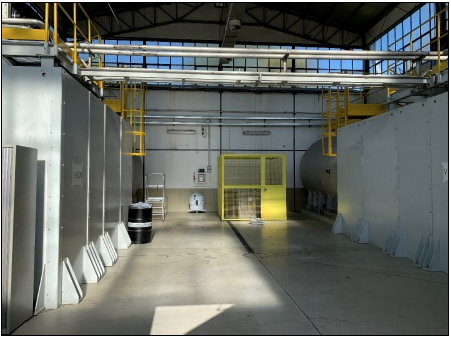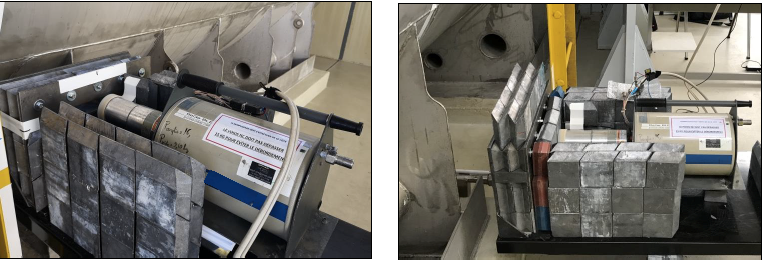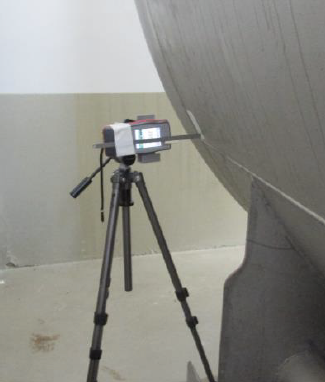The INSIDER project is developing a validation method of the radiological characterisation for the nuclear installations under decommissioning and dismantling (D&D) process. The in-situ benchmarking exercises are a fundamental part of this objective, and the first round was completed in 2018. Within the frame of INSIDER and in the autumn 2019, the second on-site benchmarking exercise was carried out at the JRC site of Ispra (Italy).
Dose rates and gamma spectrometry measurements were carried out under restricted conditions in the liquid waste storage facility. This Ispra site is denominated as “Tank Farm” and is the second of the use case studies set up in the INSIDER Project.

Ispra“Tank Farm” with the small interfering tank.
The exercise was carried out over four weeks; each week two teams, belonging to two different organisations, partners of INSIDER or external collaborators, worked simultaneously to obtain the required data. Different equipment and methodologies have been used in order to check as much as possible of the various systems existing in the market. All the staff from the different teams faced the problems and difficulties always arising in the experimental work with a high level of proactivity and professionalism.

Positioning and shielding system. With a Ge detector in position with open and close collimator.

Dose rate measurement probe in place.
The definition and the successful development of this exercise was the result of a collective effort made by the colleagues from different Work Packages in charge of the choice of the different user cases, sampling plans and systems definitions. Practical organisation of the exercise was the responsibility of WP5, coordinated by Margarita Herranz (UPV/EHU).
But above all, the completion of the second in-situ benchmarking exercise has been possible thanks to the good work of the JRC Ispra staff that, not only prepared the facility so that the measures could be carried out in the required and similar conditions but also, provided the information needed to obtain the final data. In addition, they were always attentive to the realisation of the exercise and the specific needs of the different participants.
POST WRITTEN BY MARGARITA HERRANZ FROM THE UPV/EHU AND INSIDER PARTNER
Comments are closed.




